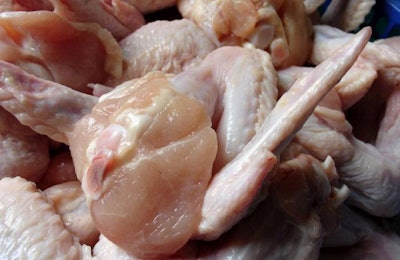
It is hard to believe that a huge exporter of chicken meat, such as the United States, has not been able to fill the entire zero-tarriff import quota in a country that offers it. But it is true, and it has been happening in Colombia.
Under the foreign trade agreement reached in 2012 between the two nations, frozen American chicken can freely enter this Andean country up to an amount not exceeding 4 percent of local production, which is equivalent to 62,000 metric tons.
In the five years of the treaty's validity, that amount has never been met. In 2012 some 27,000 metric tons made it, and last year there were 32,000 metric tons; it is possible that this year "only" 34,200 metric tons will enter the country.
Why has competition been discouraged?
Is the Colombian poultry industry so wonderful as to discourage such competition? The short answer is yes, but it is not the only factor. There are other reasons that go beyond advances in technology, genetics and animal husbandry.
There are also common circumstances with other neighboring countries, especially in South America. One of them is the inland locations of its main urban centers, far from the coasts and badly connected with them, through precarious and tortuous routes.
Colombians frequently hear that it costs more to send a container from the mountainous central part of the country to any of its ports in the Caribbean or the Pacific, than to bring a container by vessel from China. It is not fiction and the same happens back and forth.
Imported chicken has faced its first great logistics barrier.
The second barrier, which all the poultry producers in the hemisphere also know, is the overproduction that keeps prices depressed and, not infrequently, they do not support production costs.
According to data from Fenavi (the Colombian poultry production federation), chicken meat retail prices have remained practically stable since 2010 in real terms, that is, after adjusting for inflation.
The key to survival, they say at Fenavi, has been the constant improvement in productivity (last August, for example, production had risen 5.8 percent, although the chick placement only grew 2.6 percent).
Oversupply and bad roads end up giving an important hand to a prudent and efficient sector.


















